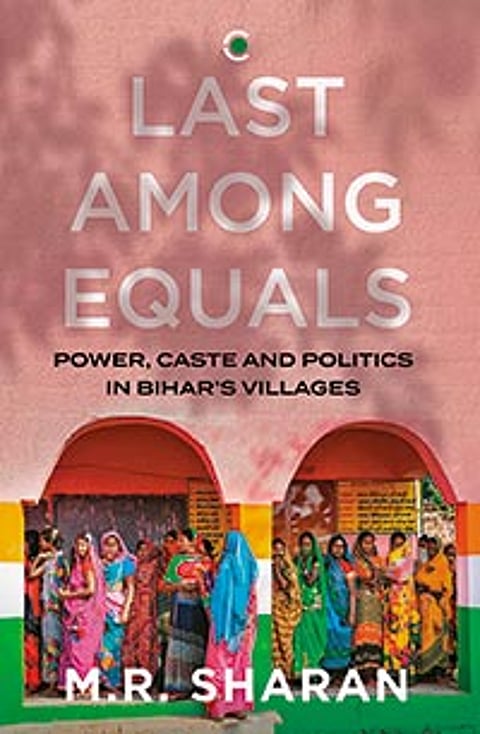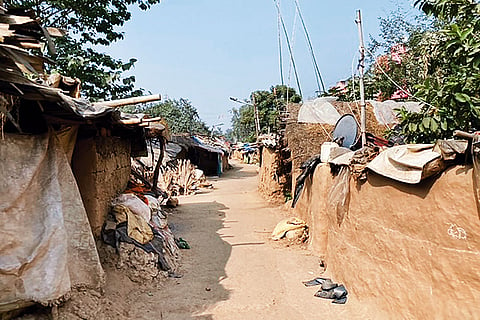For 14 years between 1956 and 1970, economist Thomasson Januzzi painstakingly collected and pored over data from five villages in Bihar. What emerged, in one reviewer’s words, was “a detailed picture of… impending doom, for which both India and the world are unprepared…” Bihar was a feudal society with rich zamindars lording over a vast mass of peasants who lived slightly below subsistence. Extreme poverty in Bihar is, thus, not a new problem; neither are forecasts replete with doomsday imagery.
How Caste Equations Continue To Shape Bihar’s Economic Fortunes
Bihar craves fresh policy ideas at the top, and better, more imaginative politics at every level.

In the first two decades after Independence, the State strove to distribute wealth better, in Bihar as elsewhere in the country. A key policy tool was introduction of land reforms. However, the powerful and oppressive hierarchies of caste and kinship successfully overcame these attempts. Bihari landlords, instead of giving up claims to their lands, chose to distribute it among their kin and, as Januzzi documents, this only meant that “the poor became even poorer”.
Caste remains obstinately all-pervasive, ordering society in rigid, hierarchical terms. Statewide data from 2011 shows that the following are the bottom nine caste-identifiable surnames in terms of wealth: Mushahar, Rishidev/Rishi, Choupal, Bhuinya, Sada, Rajvanshi, Manjhi and Ravidas. What unites them? They are surnames predominantly used by Dalits. Thus, even in the new millennium—and frighteningly so—caste and wealth hierarchies map onto each other in ways that have always been true, arguably since the Buddha attained enlightenment in Bodh Gaya in Bihar.
Yet, within this broader static picture, there are hints of both mobility and nuance. The Dalits of Bihar may live in extremely poor conditions, with barely any upward mobility, yet there are hierarchies even within them. There are sub-castes among Dalits, like the Paswans, who are considerably better-off than others. Purely economically speaking, a section of sub-castes now classified as Extremely Backward Classes (EBCs)—the Sahnis of central and north Bihar, for instance—are worse off than the Dalit Paswans and Rams of Bihar. Thus, a fuller understanding of caste in Bihar—and its relation to economic well-being—must engage with notions beyond the simplistic binary of Dalit and non-Dalit.
Nitish Kumar acknowledged this as early as in his first term as chief minister. He explicitly formulated affirmative action policies, taking into account relative deprivations of different sub-castes. This was partly in keeping with his stated vision for a more equitable society, and partly out of cynical political calculations—the Kurmis, Nitish Kumar’s core caste base—are less than 5 per cent of the population. Building a broader coalition of sub-castes that would support him was necessary.
A new category called Mahadalits was carved out of Dalits, which excluded Paswans and Rams, and policies and benefits were targeted at this new sub-group. Similarly, the EBC sub-category was carved out of the OBCs. Under the Bihar Panchayat Raj Act of 2006, up to 20 per cent of seats in panchayats were reserved for EBCs. Did these policies work and improve lives? We don’t have good empirical data on it yet. However, over time, the Mahadalit category has become redundant, because, after multiple additions to the original list of sub-castes considered Mahadalit, Bihar has reached a stage where every Dalit is also a Mahadalit!
What we do know, however, is that other policies explicitly targeted at Dalits seem to have worked better at improving lives. As Chinmaya Kumar and I have documented, reservations for the post of mukhiya in panchayats seem to have improved Dalit well-being. Our findings suggest a virtuous cycle between reservation, wealth creation and political participation: the presence of Dalit leaders improves material well-being of Dalits, which results in more Dalits standing for elections even after reservations are no longer in place, which, once more, result in improved well-being.

Margin of margins Sewri Nagar in Bihar, where Musahar’s live. (Photograph by Vishnu Narayan)
Similarly, since 2016, the government has continued to empower marginalised groups by dabbling in decentralisation and devolving a modicum of financial power to Bihar’s 1,14,000 ward members. Ward members, representing constituencies as small as 200 households, were given funds to implement two key flagship Saat Nischay schemes—the Nal Jal Yojana (piped water) and the Nali Gali Yojana (drain construction). Ward members also belong to a much more diverse set of castes than the mukhiyas, who are the heads of panchayats and represent about 2,500 households. Mukhiyas are often drawn from the powerful elite, land-owning castes, and have first claim over the vast pool of panchayat development funds. This allows them to profoundly shape the way lives are lived in villages of Bihar, especially among the poorest.
In my book, Last Among Equals: Power, Caste and Politics in Bihar’s Villages, I document how ward members were empowered by improved access to the state’s funds, while simultaneously continuing to fight caste hierarchies. Dalit wards, which are first in the pecking order to get the Nal Jal and Nali Gali yojanas as per government orders, often faced substantial delays in implementation. Why? Because the money to implement these schemes would still flow through the mukhiya, and four out of five mukhiyas in Bihar are non-Dalit, many of whom continue to discriminate.
Dalit ward members use all sorts of coping mechanisms, including repurposing a citizens’ complaints system to complain about their mukhiyas. Bihar’s complaints’ system gives citizens a right to redress their grievances, the first legislation of its sort anywhere in India. Over the past five years, nearly a million complaints have been filed by citizens across the state, from the poorest of regions and castes. Our research shows that a third of these complaints filed by citizens are actually resolved, a reasonably high number for a state with weak capacity like Bihar. Dalit ward members, finding themselves on the periphery of the local government machinery, use the grievance redress system to lobby for their constituents. In an ideal world, with more devolution of financial powers to wards, ward members wouldn’t need to take recourse to a citizens’ forum to redress their grievances; mukhiyas wouldn’t function as little autocrats and local government would truly emerge to be more democratic.
Ward members are, in the end, local government officials, and thus, even the poorest among them are unlikely to be on the margins of society. What then of the citizens? Lives today may not be as precarious as they were in Januzzi’s time, but for many, attaining a basic level of education, finding work and nutritious food remains a struggle. Some, as in the case of the spirited women workers—mazdoors of Muzaffarpur and Araria—are moved to collectively mobilise against the State, demanding what is rightfully theirs: work (under MNREGA), food (under PDS) and shelter (under the PM Awas Yojana). Yet, systematic collective action is hard. A glimmer of hope here is seen via Jeevika, the Bihar government-run self-help group programme, which boasts a network of over one crore women in villages across the state. More research is required to document its impact on poverty.
The policies I have described are mostly redistributive, attempting to change the way the economic pie is split between the rich and the poor. The economic pie, however, is barely growing: there are far too many people in agriculture, not much dynamism in industry—it did not help that a substantial chunk of the mineral resources were lost to Jharkhand—and a services sector that is significantly weakened by a higher education system in ICU and flight of the educated elite to greener pastures outside the state. In his first term as chief minister, Nitish Kumar plucked low-hanging policy fruits to spur growth and development. His government fixed law and order and built roads and infrastructure. Yet, the bedrock of long-term, sustainable growth lay in improving public health and education, the weaknesses in both being brutally exposed by the pandemic. Indeed, estimates from a small pilot study I was part of suggest nearly three lakh excess deaths in the two months of the second wave in the state.
In 1976, the reviewer of Januzzi’s book was remarkably prescient when he noted that to address Bihar’s issues, one would need to “work out imaginative options to serve as guidelines for confused and perplexed administrators”. Indeed, nearly 50 years on, Bihar craves fresh policy ideas at the top and better—and more imaginative—politics at every level.
It is the least this land of deeply political people can do to help themselves.
(This appeared in the print edition as "Muddle Kingdom")
(Views expressed are personal)
ALSO READ
M.R. Sharan is Assistant Professor of Economics at University of Maryland